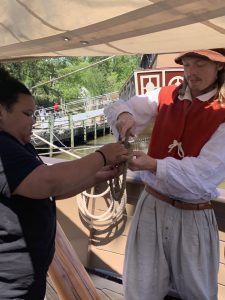What is InTASC Standard #3: Learning Environments
Learning environments are more than academic spaces for building content knowledge–they are also places where students practice self-regulation, build social skills, and explore their curiosities. The teacher contributes to an learning environment that meets basic needs and expands on individual capabilities. InTASC Standard #3 emphasizes the importance of planning a learning environment that fosters community and engagement for all students.
Artifacts for InTASC Standard #3:
Classroom Management Plan
An effective learning environment requires preparation. The teacher understands that developing a classroom management plan organizes daily procedures to make time for learning and minimize behavioral interventions. This is an essential practice of InTASC Standard #3 because the classroom management plan sets positive expectations that invite the class community to maintain a warm and constructive learning environment.
(Click the link to view a classroom management plan I’ve developed for my future classroom: EDUC 399_012223_Classroom Management Plan)
Classroom Library
The 4th Grade classroom library is a cozy corner filled with books, a small rug, and fuzzy bean bag chairs. The library not only provides a quiet place to read, but it also includes a calming space complete with stimulating toys to soothe anxiety. The classroom library aligns with InTASC Standard #3 because it makes resources for emotional regulation and academic enrichment easily accessible to students.
Field Trip to Historic Jamestown
Learning environments also exist beyond the walls of the classroom. This 4th Grade trip to historic Jamestown expands on the students’ content knowledge through enriching activities. The trip included a visit to the original historic site– where students could witness archeological digs and wander through the site’s last remaining church–to complement what students learned about Jamestown in November. On this field trip, students engaged in various learning experiences, from weaving reeds that indigenous people used to support their houses to tying knots aboard a replica of the Susan Constant. This learning environment supports the purpose of InTASC Standard #3 by providing learning environments that support engagement. While the classroom offers content knowledge, field trips like this one can provide details that immerse the student in their learning.
